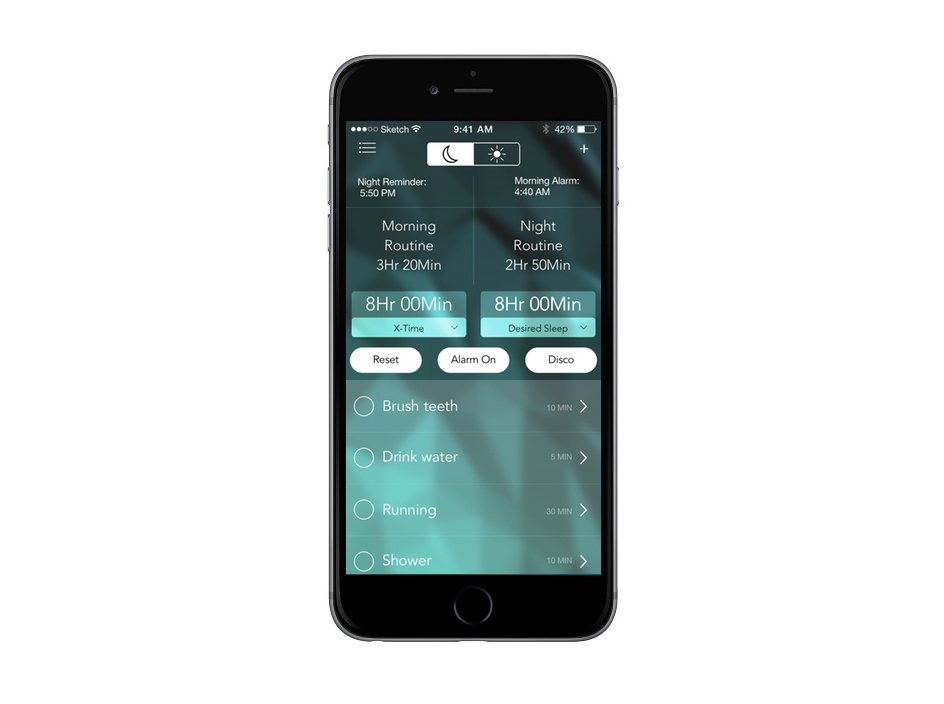Habit Savvy
-
Introduction
Brief: Redesign the Habit Savvy app to make daily routines easier to set, edit, and stick with.
Challenge: Users were overwhelmed by cluttered screens and too many options for routine and sleep settings.
Goals: Streamline routine setup/editing, reduce cognitive load, and make it flexible for real-life changes.
-
Discovery Phase
Stakeholder interviews: Talked with the product team and early adopters.
Business requirements: Keep the app lightweight, allow for premium upsell, and support quick edits.
User needs assessment: Users want to create and change routines on the fly, without getting lost in settings.
-
Problem Framing
Problem statement: All-in-one screens for editing routines and sleep time created confusion and friction.
Success criteria: Users can set up, adjust, and add routines in a few taps, with settings out of the way until needed.
Constraints & assumptions: Must be mobile-first, support add-on purchases, and minimize cognitive load.
-
User Research
User interviews: Gathered feedback from Facebook groups and TestFlight users.
Competitive analysis: Checked out top habit/routine apps—most lacked on-the-fly flexibility.
Market research findings: Users value customization and quick edits over heavy features.
-
Synthesis
User personas: “The Busy Professional,” “The Habit Hacker,” and “The Parent on the Go.”
Journey mapping: From routine setup to daily use to making quick changes.
Key insights & opportunities: Separate routine and sleep settings, add premium routine containers, keep advanced options tucked away.
-
Solution Development
Information architecture: Split routine/sleep settings, added a dedicated settings screen.
Wireframes & prototypes: Iterated on flow for adding/editing routines and containers.
Visual design system: Clean, minimal, with big tap targets and cheerful colors.
-
Testing
Usability testing: Ran with current users—flagged confusing flows and slow edits.
User feedback: Added multi-routine creation and improved quick-edit options.
Design iterations: Polished navigation and reduced clutter even further.
-
Implementation
Handoff process: Annotated wireframes and flows delivered to devs.
Development collaboration: Tight feedback loop to ensure smooth edits and premium features.
Go-to-market strategy: Launched with in-app messaging and targeted push notifications.
-
Results & Impact
Metrics & KPIs: Faster routine edits, higher daily engagement, more premium upsells.
User adoption: Users report less friction and more flexibility in daily routine management.
Business impact: Increased retention and opened up new revenue streams.
Lessons learned: Keep flows simple, customization easy, and advanced features out of the way until needed.
Habit Savvy helps you optimize your morning (and night) routine. People have the most control over the time immediately before and after we sleep. Using a timed routine list, Habit Savvy helps organize this time and serves as an action reminder, helping you easily implement new habits and take action towards your goals.
Once your routine is set up( you only need to follow one simple habit to implement many new habits: Remember to follow your Habit Savvy routine!
In wireframe and mapping the flow of the App it was clear rearranging the existing elements would add a better affordance level.
But while mocking up the current version it was clear that the App functionality could be extended, from the research conducted on Facebook and users that had access to the App on TestFlight. Users suggested that the App would benefit from extending its ability to change and customize your routine.
In Priming the Apps ability to change or add routines on the fly its functionality needed to be changed from the existing App. Giving the user the ability to amend routines and sleep time all on one screen caused a large cognitive load on the user. The best outcome was to have a settings screen that would hold the defined time perimeters along with the ability to set the amount of time needed for each routine.
Adding additional routines allows for unexpected changes in the users day, this will allow them the user to focus on the key actions needed to get things done. This also allowed an opening for a Paying mechanism to the app where users can buy additional routine containers.







